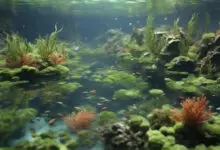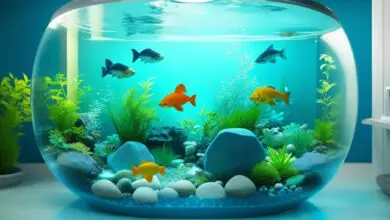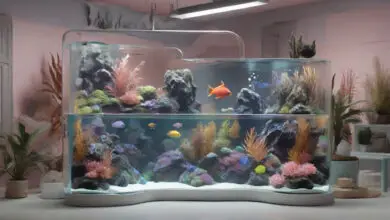Common Algae Problems and Solutions

Algae are tiny plants that live in water. When conditions are right, algae can grow very fast in ponds, lakes, pools and other bodies of water. While some algae are harmless, too much algae causes problems. Thick algae make the water look bad, smell bad and be difficult to use.
Why Too Much Algae is an Issue?
There are a few reasons why too much algae causes troubles:
- Thick algae block sunlight from reaching underwater plants. This kills those plants.
- Rotting algae use up oxygen in the water. This is bad for fish and other animals.
- Some algae release toxins. These toxins can kill animals and make the water unsafe.
- Fast growing algae use up nutrients. This leads to poor water quality.
- Thick mats of algae are unsightly and foul-smelling. They make the water unpleasant to be around.
Controlling algae is important for keeping water bodies healthy and usable. As algae grow faster, more advanced control methods are needed.
What Makes Algae Grow?
Algae spores are always present in water. Normally algae grow slowly. But when certain conditions happen, growth takes off rapidly:
Sunlight – Algae need sunlight to live and multiply. More sun exposure leads to faster growth.
Heat – Warmer water causes algae to reproduce more quickly.
Standing Water – Stagnant water allows algae to remain in optimal growing conditions longer. Flowing water makes growth more difficult.
Nutrients – Fertilizers, animal waste and other nutrients feed algae growth. More nutrients equal more algae.
Low Oxygen – Lack of oxygen allows more resilient algae to crowd out organisms that would compete with or eat algae.
Unbalanced Biology – Removing algae-eating organisms sets the stage for faster algae growth.
By understanding and controlling these factors, algae can be better managed. Often multiple advanced algae control methods are needed for the best results.
Advanced Algae Control Methods
Reducing Sunlight Exposure
Sunlight enables rapid algae reproduction. Reducing sunlight reaching the water’s surface limits growth. Consider these advanced options:
Artificial Dyes
Specially designed dyes can be added to water bodies. These dyes tint the water blue, green or black. The tinted water blocks light from penetrating deeply. Less sunlight reaches bottom-dwelling algae species. Dyes must be carefully reapplied on schedule.
Surface Covers
Floating covers form a protective barrier preventing sunlight from the water surface. Popular cover options:
- Plastic Hexagonal Tiles – Interconnecting plastic tiles float on the water surface, blocking close to 100% sunlight.
- Floating Mats – Woven mats made from straw or coconut husks float at the surface. Light blocking rates range from 70-95% depending on mat thickness.
- Liquid Blankets – Liquid hydrocarbons spread across the surface and block sunlight. Reapplication is needed routinely.
Surface covers also reduce oxygen exchange. Supplementary aeration may be required for healthy water.
Surface Vegetation
Allowing vegetation like lily pads, duckweed and water hyacinths to cover a majority of the water’s surface shades out algae growing below. Roughly 60% surface coverage by vegetation provides good light blocking.
Water Depth
Increasing a pond or lake’s maximum depth limits light penetration to bottom layers. Deepening small sections to over 16 feet deep allows minimal light to reach bottom sediments. This creates permanent zones prohibiting algae growth.
Controlling Nutrient Loads
Abundant nutrients are like fertilizer for algae. Decreasing nutrient levels through better feeding, cleaning and filtering reduces algae food sources. Useful techniques include:
Ultrasonic Algae Control
Ultrasonic devices transmit high frequency sound waves into the water. The agitation caused by these sound waves makes it difficult for algae spores to attach and begin reproduction. Ultrasound units must be sized appropriately and located for full water coverage.
Ozone Injection
Ozone is bubbled into the water at treatment stations around the pond or lake. The ozone oxidizes algae cell walls on contact, killing the organisms. However, the ozone dissipates quickly requiring regular supplementing.
UV Radiation
Special UV lights expose floating algae to lethal doses of ultraviolet C light. The UV radiation disrupts cellular processes stopping algae growth. Like ozone, the effects are not long lasting necessitating repeated treatments.
Biological Cleaners
Adding algae-eating organisms restores a biologically balanced pond ecology preventing aggressive algae takeovers. Example algae consumers:
- Zooplankton – Microscopic water fleas graze voraciously on suspended algae.
- Tilapia – These hardy plant-eating fish scarf down strands of filamentous algae.
- Tadpoles – Young frogs nibble algae films coating sediment surfaces.
- Ducks & Koi – While not pure herbivores, these fish and fowl will eat ample amounts of algae daily.
Combining algae-eating organisms often works better than just one type alone. Maintaining a critical mass for several years usually leads to clear water.
Best Practices for Prevention
Vigilant maintenance and prevention habits reduce algae’s foothold long-term:
- Test Water Quality – Monthly testing tracks nutrient levels and harmful bacteria. Early detection provides more control options.
- Clean Filters & Pumps – Weekly cleaning of filtration systems prevents nutrient overload from decaying matter.
- Reduce External Nutrient Loads – Cutting external nutrients from runoff, accumulating debris and wildlife waste starve algae spores.
- Shock Chlorinate – Periodic chlorine treatments kill algae formations before they spread.
- Maintain Circulation – Water jets, cascades and surface agitation limit places algae can settle and attach.
- Manage Landscaping – Trimming back vegetation overgrowth on banks eases organic debris from entering the pond.
Conclusion
Left unchecked, aggressive algae can seriously degrade backyard ponds and community waterways. Advanced prevention and control strategies reduce the likelihood of algae destroying aesthetic appeal or ecological balance. Using multiple treatment methods tailored to site conditions offers the best success combatting excessive algae growth. Paying attention year-round minimizes unwanted green takeovers.
With vigilance and the right combination of control measures, algae can be limited to reasonable levels for healthy, attractive water features. Techniques like reducing sunlight, controlling inputs and restoring balanced biology restrain algae growth and spread. Though rarely eliminated completely, advanced algae control options allow coexistence with minimal interference by nuisance algae.







